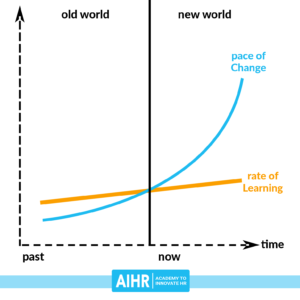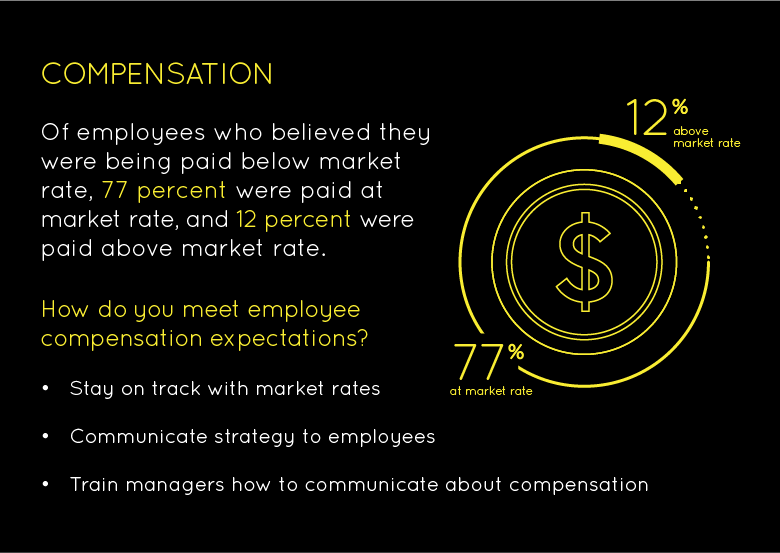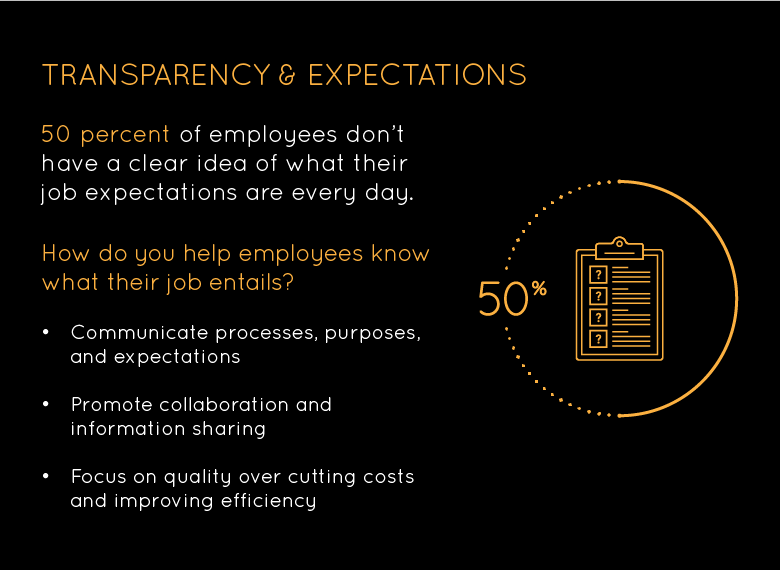Table of Contents
The first question is: what are the best practices in human resource management?
Best practices in Human Resources Management are a collection of procedures and behaviors shown to be effective in all situations. In human resource management research, there are two schools of thinking on how to manage people. The first is the most appropriate, while the second is the most acceptable practice.
According to the best fit school, human resource policies should be aligned with corporate strategy to provide value. This implies that human resources should pay attention to both the demands of the business and the needs of its workers.
Those who subscribe to the best practice school believe that a set of universal human resource methods results in improved corporate performance. There are specific bundles of human resource activities, according to its proponents, that help organizations achieve a competitive edge regardless of the organizational environment or industry in which they operate (Redman & Wilkinson, 2009).
We’ll skip over the lengthy scientific argument about the advantages and disadvantages of each strategy. When it comes to these kinds of debates, the truth is often found somewhere in the center.
This implies that the human resource strategy and subsequent human resource actions should be linked with the organization’s plan to maximize efficiency (a.k.a. strive for best fit). As alluded to in the literature, this alignment is referred to as Strategic Human Resource Management (SHRM).
What Are the Best Practices in Human Resources?
Best practices are commercial or professional methods widely acknowledged and promoted as proper and successful in their respective fields of expertise. Guidelines, ethical principles, and concepts that reflect the most efficient course of action in any given circumstance consider all aspects of human resource management.
The best practices in human resources management are aligned with the aims and objectives of the organization and offer value to the organization as a whole.
- Policies and processes should contain the following elements:
- Best practices in human resource communications
- Best practices in human resources automation
- Best practices in human resource management analytics
- Best practices in human resources for interviewing and hiring
- Employee engagement best practices are discussed here.
Advantages of Establishing Strong HR Practices
- Increase the productivity of your employees.
- Make sure the corporate culture is maintained and that all workers are a good match.
- Improve employee retention and company reputation by making workers feel supported and driven.
- Increase employee satisfaction by making employees feel supported and motivated.
- The pursuit of continuous improvement in terms of professional development and corporate strategy
- Increase the effectiveness of talent management.
- Keep track of progress to ensure that the company’s goals and objectives are met.

HR Best Practices
Education and training in related skills
According to this human resource best practice, organizations should devote a significant amount of time and money to educating their personnel.
As soon as you’ve hired the most qualified candidates, it would help if you guaranteed that they continue to be the greatest in their profession. Due to the exponential increase in the pace at which technology is advancing, this has become even more significant in today’s world. This is where the concepts of learning and growth come into play.

How can we build a culture in which the learning rate meets the rate of change in our organization? Learning has evolved into being inventive, growing more quickly, and maintaining a competitive edge.
Employers are increasingly putting money into skill-specific training programs. As reported in the Economist’s particular study on Lifelong Learning, the number of on-demand courses has increased at an exponential rate. With the internet, everyone has access to information and can learn about anything, at any time and from any location.
On-the-job learning, in addition to formal education, is very crucial for career advancement. This is made possible by a greater emphasis on feedback, coaching, and peer learning. This is a component of the often-cited 70|20|10 rule:
- The majority of knowledge comes from complex tasks (70 percent).
- Developmental partnerships are responsible for 20% of all education.
- Formal courses and training account for ten percent of total learning.
Learning is also becoming more vital for the most recent generations, such as the Millennials and Generation Z, as they enter the workforce. Compared to past generations, younger workers place a higher value on learning and personal development, according to Gallup.
In addition, the next generation of employees is actively seeking out growth opportunities and sees them as a means of progressing in their careers. Employee turnover is associated with greater levels of employee turnover when these opportunities are not provided.
Learning is, of course, crucial in the field of human resources. To keep current and develop the skills necessary to perform HR functions in the twenty-first century.
Selective hiring: Choosing the best
The second best practice in human resources is selective hiring. This helps a company to hire workers who will offer value to the enterprise.
You cannot employ just anybody; you must hire individuals who are qualified for the position. Companies go to great lengths to recruit excellent employees because they provide the most outstanding value to the organization. Also required is prioritizing the development of an organized and fair selection procedure for all applicants. This reflects regulatory obligations, corporate diversity objectives, and the fact that a more varied workforce is more representative of society as a whole, among other things. This may be valuable in understanding broader consumer behavior and the demands of various types of clients.
Depending on the research, the gap in performance between a low performer and a great performer might be as much as 400 percent! Moreover, this is true across many businesses and employment, including academics, performers, and sports.
As a result, attracting the most qualified candidates is critical to establishing a competitive edge.
In today’s digital age, we have various recruiting tools at our disposal to help us make the best possible choice. As a result, more and more businesses are keeping close tabs on their recruiting metrics to see how well they are performing in this area.
Structured and unstructured interviews, IQ testing, personality evaluations, job tests, peer assessments, and reference checks often use selection tools. These (pre-employment) evaluations are designed to identify three essential traits of potential employees.
- Ability: Is the individual capable of doing the required tasks? Is the individual equipped with the necessary technical and soft skills? Is the individual intelligent enough to carry out the responsibilities of the position?
- Trainability: Is it possible to teach this individual to enhance their skills? Does the individual have the ability to learn and grow in the future?
- Commitment: Will the individual be devoted to their job and the organization? Will we be able to keep this individual after they have gotten up to speed and started contributing?
Fair and performance-based remuneration
Contingent compensation is the fourth-best practice in human resource management. However, there’s a lot at stake when it comes to salary and perks.
First and foremost, if you employ the proper individuals, you should reward them more generously than the norm. As a result, you want to retain and compensate them appropriately since they are the individuals who will offer the most significant value to your organization. This is an example of how several best practices, in this instance, selective hiring, contingent pay, and job security, may be used in conjunction to deliver more value than they would be able to provide alone.
Paying workers more than the average wage has some potential drawbacks as well. For example, it makes it more difficult for problematic workers to depart. However, if you’re constantly employing world-class performers, you’ll need to compensate them at or above market rates.
This kind of compensation package might include monetary compensation (base pay) and perks for employees. In addition, it would help keep up with market developments in your profession and related industries (many of the best employees may come from other career areas). Then you’ll be able to figure out the typical pay rate and how your firm performs in terms of compensation in the marketplace.
Second, you want to tie individual awards to the various sorts of contributions that workers make to maximize their effectiveness. Again, these are incentives that are linked to performance.
Individuals are encouraged to optimize organizational performance outcomes when individual incentives are tied to corporate performance outcomes. It also instills a feeling of pride in the employee’s accomplishments.
Consider the concepts of profit sharing, shared ownership, and stock options, for example. These are excellent methods of instilling employee commitment to the company’s long-term strategy and retaining high-potential employees. Thus, compensation is a critical component of effective personnel management strategies.
This sort of co-ownership is often not intended for all workers, following the above statement. Lepak and Snell (2002) provide an excellent methodology for determining the importance of individual workers.

You want to make sure that your “Criticals” are kept on the payroll as a company. This is because they possess distinguishing characteristics (i.e., are difficult to replace) and are very useful to the organization. As a result, these perks are often extended to senior managers, who fall into this group.
Transparency
Maintaining transparency and being upfront with workers about the company’s successes and shortcomings is a critical human resource strategy in today’s corporate environment. Those working in organizations that encourage a climate of open feedback and communication are more likely to feel trusted, respected, and appreciated.
It would help if you did the following to have a high-impact human resources department:
- Encourage Collaboration and Idea Sharing: Put your efforts into establishing an atmosphere that encourages the collaboration of ideas and sharing information. It is believed that employees who are well-informed about the company’s operations are better able to express their thoughts and believe that it is necessary to be involved in choices that influence their careers.
- Establish an Environment of Honesty and Transparency: When businesses are honest and transparent with their workers, they help to foster a culture of trust amongst them and with one another.
If you are in charge of human resources, you should avoid prioritizing efficiency and cost-cutting above all else since this may prove to be less productive in the long term. Instead, advocate methods that foster openness and transparency in the workplace, as well as information exchange.

Benefits for employees
There are a plethora of perks that you can give to your workers, but which ones are the most valuable to them? The most effective benefits programs take a strategic approach to attaining corporate objectives and keeping excellent personnel. They also make sure that your employees understand their advantages.
- Choose Employee Perks that Show You Value Them: Learning from other human resource practices may help you decide where to spend your company’s money on employee benefits. It also assists you in determining which rewards are most likely to assist you in retaining the top staff. For example, you may opt to give medical and dental coverage, health and fitness facilities, subsidized tuition, or any other perks that will demonstrate to your workers that you respect their contributions to the organization.
- Benefits May Be Used to Resolving Workplace Concerns: Google is an excellent illustration of how benefits can be used to resolve workplace employment issues. Several years ago, they realized that the number of women employed by the firm was steadily declining. They took action. Google conducted some studies and discovered that most of the drop was due to younger women leaving to have families. To keep workers and its bottom line healthy, Google introduced a five-month maternity leave policy that included full pay and benefits for all new mothers. Because of this incentive alone, they saw a 50 percent improvement in the retention rate of female employees.
While Google’s method is not viable for many businesses, it is crucial to discover areas where you are losing money and why you may be having difficulty retaining staff in your organization. Though you want to recruit and retain the top talent, you must treat them as the best talent possible and demonstrate that you respect your workers’ contributions.
Issues relating to compliance
The most effective method to deal with compliance concerns is to prevent them from occurring in the first place and juggle the intricacies of compliance concerns with the day-to-day chores of other human resources procedures in the workplace. Here are some human resource strategies that might help you avoid non-compliance problems.
- Make Use of HR Software: Using HR software to streamline your HR compliance activities is a beautiful method to minimize compliance issues. This will assist you in promptly identifying and correcting problems, as well as avoiding future compliance concerns.
- Delegate Compliance Responsibility to Your HR Team: Designating a point person for your HR team responsible for staying on top of new rules and changing labor laws is one of the most effective strategies to ensure that your company remains compliant. This information must also be shared with the human resources department to guarantee that everyone is on the same page regarding legal matters.
Hiring, employee categorization, and salary regulations are all aspects of business that need ongoing attention to remain compliant. However, it is possible to keep one step ahead of any anticipated changes to HR by using your point person and your human resources software.
Establish a human resources budget
To adequately fund your human resources department, you’ll need to set aside funds to cover the expenditures of establishing the department and recruiting your HR personnel. In addition, budget allocations will also be made for company-wide programming and other culture and team-building activities that HR may decide to conduct.
Create job descriptions
It is via posting job descriptions on your website and on job-search websites such as LinkedIn and Glassdoor that you will attract applications. First, you’ll need to establish job descriptions for all of the human resources positions you’ll be hiring for. Afterward, when you fill some of these HR jobs, those new workers should be able to aid you in developing all of the other job descriptions for your expanding firm.
Create an employee handbook
When it comes to workplace conduct, safety, health, and culture, an employee handbook (whether printed or digital) is an excellent tool for setting clear standards from the beginning. In addition, you should include in your handbook answers to any questions that your workers may have concerning these subjects (and any others you deem appropriate) throughout their training and subsequent employment with your organization.
Establish safety protocols
It is expected that your workers will be at the workplace for roughly eight hours every day, which means that it must be a healthy and safe environment for them to spend such prolonged periods in. If one of your workers ever felt unsafe or in danger of mental or bodily damage. At the same time, it would be challenging to expect them to be productive employees in such a situation.
If you want to prevent this, you should establish workplace health and safety guidelines, which you may put in your employee handbook if you like. Declare your safety policies for dealing with various forms of personal altercations, as well as processes for dealing with crises and other potentially unexpected or hazardous events, so that everyone is aware of how to respond correctly.
Organize and collect administrative records
Even though you may have an executive assistant responsible for collecting and organizing a large portion of your company’s administrative records, there is a significant amount of data that should be gathered, processed, and handled by your human resources department. Job applications, benefit plans, tax records, and salary and payroll information are examples of the materials that may be included.
Display the required job postings
Several state and federal regulations impose requirements on businesses and their human resources departments to display specified job posters around their workplaces to be accessible to anyone entering the building. The rules and standards for some of these needed posters vary over time, so make sure to stay up to date with the latest changes in your state and nation.
Evaluating and providing feedback on performance
Employee success and happiness are critical components of a successful business – without these two factors, it would be impossible to retain your most exemplary employees and keep them happy. In addition, creating company-wide performance and feedback mechanisms can help guarantee that everyone is held to the same high standards that you and your HR staff have established and are committed to upholding.
Employee performance reviews should be conducted regularly to guarantee that all workers are performing to their maximum capacity. It is also essential to spend this time ensuring that your workers are content with their positions, believe they have the opportunity to develop with your firm, and like being a part of your team.
Competitive compensation and benefits packages
A competitive wage and benefits package is an excellent strategy for attracting and retaining high-performing personnel. However, Cassandra Rose, a partner at Meritarc, a human capital management software platform, points out that it is also a vital component of employee retention in general.
The human resources department does salary research for each position to identify the most excellent offer the firm can make depending on the candidate’s experience and educational background. They are also in charge of employee benefits like health insurance, time-off policies, 401(k) plans, and similar programs.
Additionally, human resource management ensures that workers obtain the intangible advantages a firm provides, such as an innovative work culture.
Researching and making plans for future requirements
Human resource management professionals take a company’s long-term future, and short- and mid-term plans include a variety of everyday activities. This involves coordinating the company’s growth objectives with its future recruiting objectives via forecasting and developing recruitment strategies.
In addition to human resource planning, HR examines human resource risk management to identify possible vulnerabilities and difficulties relating to the organization’s personnel.
According to Matthew Burr, a consultant with the human resource consulting company Burr Consulting, LLC, effective human resource management must change in tandem with the enterprise. According to him, in many circumstances, human resources must change quicker than the organization to fulfill the changing demands of the firm.
After discussing human resource management foundations, let’s look at human capital management and how it varies from traditional human resource management.
Supervising the administration of vacation and sick time
Within a company, leave management is the process of recording and authorizing employees’ time off. Human resources may be in charge of designing time-off rules and maybe in charge of monitoring long-term unpaid vacation or personal absences.
The human resource management staff keeps track of all time-off requests, approves them when necessary, and notifies employers if there is a problem with workers taking an excessive amount of time off. In most cases, the human resource team manages to leave via a human resource management system.
Make use of digital technologies.
Human resource departments get many applications for a single vacancy and spend a significant amount of time sorting through applicants to discover the most qualified individuals. If you find that your department is experiencing a similar problem, it may be time to consider using digital solutions to simplify various operations.
This might include combining your application tracking services with your background screening system to improve the efficiency of your onboarding procedures. In addition, other duplicate duties, including payroll and benefits administration, may be handled more efficiently using digital technologies.
These technologies are particularly relevant today, given the shifting dynamic of workplaces from traditional locations to remote settings. In today’s increasingly digital workplace, essential human resources workers must also serve as diplomats, regulatory experts, nurses, and even strong technology liaisons in addition to their other responsibilities.
Final Thoughts
Having a superb human resources staff is critical to the success of any company’s human resources department.
Your human resources department is in charge of employee relations, recruiting, training, career development, benefits, and business culture, among other responsibilities.
Your staff would not be able to do their duties if it weren’t for human resources. Start by estimating the amount and kind of human resources staff you’ll need, and then begin putting together your department so that your firm can continue to develop.
